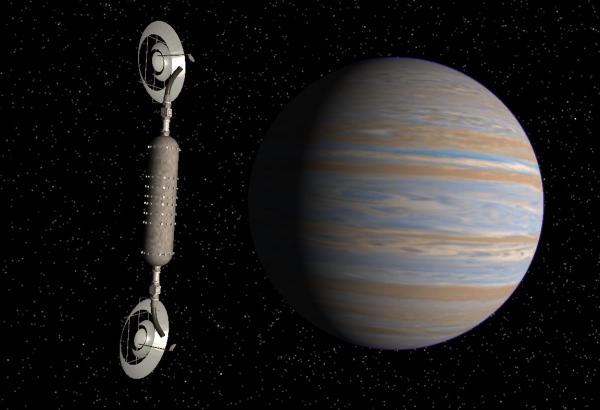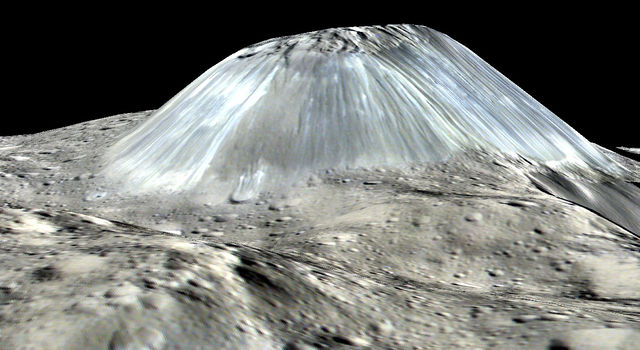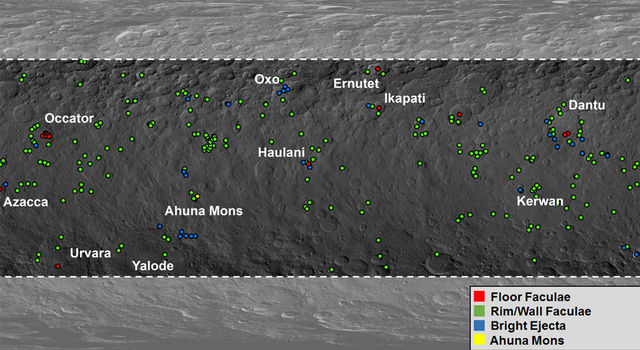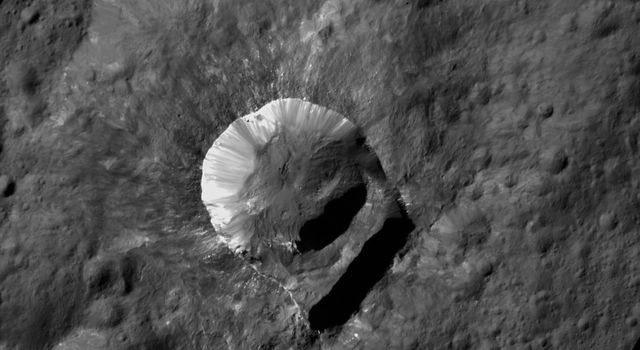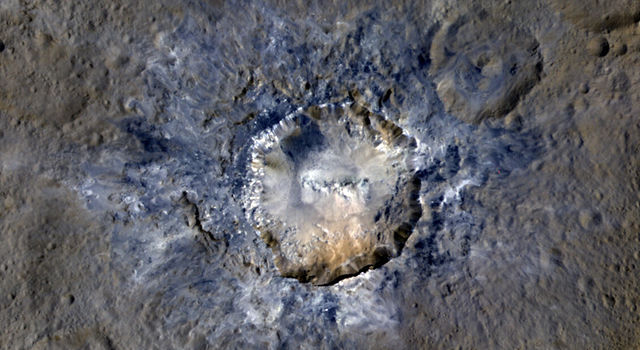ramonmercado
CyberPunk
- Joined
- Aug 19, 2003
- Messages
- 58,217
- Location
- Eblana
In the tens of thousands of photos returned by NASA's Dawn spacecraft, the interior of Ceres isn't visible. But scientists have powerful data to study Ceres' inner structure: Dawn's own motion.
Since gravity dominates Dawn's orbit at Ceres, scientists can measure variations in Ceres' gravity by tracking subtle changes in the motion of the spacecraft. Using data from Dawn, scientists have mapped the variations in Ceres' gravity for the first time in a new study in the journal Nature, which provides clues to the dwarf planet's internal structure.
"The new data suggest that Ceres has a weak interior, and that water and other light materials partially separated from rock during a heating phase early in its history," said Ryan Park, the study's lead author and the supervisor of the solar system dynamics group at NASA's Jet Propulsion Laboratory, Pasadena, California.
Ceres' gravity field is measured by monitoring radio signals sent to Dawn, and then received back on Earth, by NASA's Deep Space Network. This network is a collection of large antennas at three locations around the globe that communicate with interplanetary spacecraft. Using these signals, scientists can measure the spacecraft's speed to a precision of 0.004 inches (0.1 millimeters) per second, and then calculate the details of the gravity field.
Ceres has a special property called "hydrostatic equilibrium," which was confirmed in this study. This means that Ceres' interior is weak enough that its shape is governed by how it rotates. Scientists reached this conclusion by comparing Ceres' gravity field to its shape. Ceres' hydrostatic equilibrium is one reason why astronomers classified the body as a dwarf planet in 2006. ...
http://phys.org/news/2016-08-ceres-gravity.html
Read more at: http://phys.org/news/2016-08-ceres-gravity.html#jCp
Since gravity dominates Dawn's orbit at Ceres, scientists can measure variations in Ceres' gravity by tracking subtle changes in the motion of the spacecraft. Using data from Dawn, scientists have mapped the variations in Ceres' gravity for the first time in a new study in the journal Nature, which provides clues to the dwarf planet's internal structure.
"The new data suggest that Ceres has a weak interior, and that water and other light materials partially separated from rock during a heating phase early in its history," said Ryan Park, the study's lead author and the supervisor of the solar system dynamics group at NASA's Jet Propulsion Laboratory, Pasadena, California.
Ceres' gravity field is measured by monitoring radio signals sent to Dawn, and then received back on Earth, by NASA's Deep Space Network. This network is a collection of large antennas at three locations around the globe that communicate with interplanetary spacecraft. Using these signals, scientists can measure the spacecraft's speed to a precision of 0.004 inches (0.1 millimeters) per second, and then calculate the details of the gravity field.
Ceres has a special property called "hydrostatic equilibrium," which was confirmed in this study. This means that Ceres' interior is weak enough that its shape is governed by how it rotates. Scientists reached this conclusion by comparing Ceres' gravity field to its shape. Ceres' hydrostatic equilibrium is one reason why astronomers classified the body as a dwarf planet in 2006. ...
http://phys.org/news/2016-08-ceres-gravity.html
Read more at: http://phys.org/news/2016-08-ceres-gravity.html#jCp


